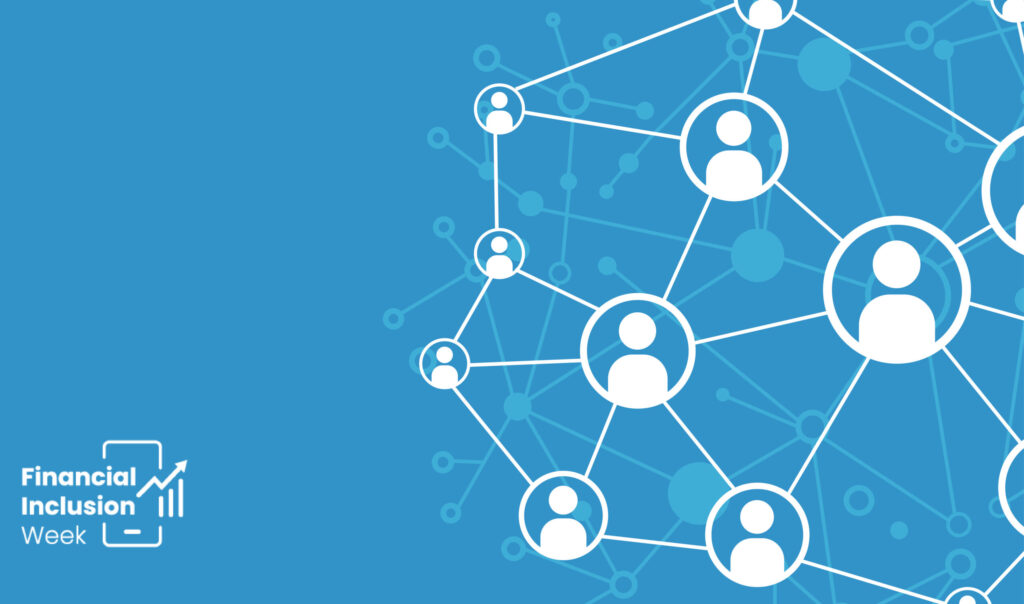
Recently, I went searching for “chin-chin,” one of my favorite local Nigerian snacks, which was out of stock in the grocery store where I regularly shop. I went instead to a small kiosk in my neighborhood and was pleased to find it still in stock there. I noticed how this kiosk seemed about the same since I last patronized it six years ago, with no apparent evidence of expansion. When I shared my observation with the vendor, his response was “country too hard.” This got me thinking of the challenges that microenterprises continuously face, especially as they relate to accessing investment funds to grow their businesses.
Like many developing countries, Nigeria has a national financial inclusion strategy (NFIS) to guide market and ecosystem actors on how to improve the lot of microenterprises such as my neighborhood kiosk. The strategy document spells out specific priority measures to be adopted in a bid to reduce credit risks and transaction costs associated with serving the most financially excluded members of society. Some of these measures include initiatives to support the expansion and reach of digital financial services, increasing agent banking networks, and promoting more channels for cashless payments.
Flaws in the National Financial Inclusion Strategy
The pace of financial inclusion remains sluggish, however. The country’s strategy has been less successful than anticipated due to several factors, including overly long intervals in assessing progress/impact of the policies adopted, use of limited progress indicators, lack of flexibility, and limited capacity for making quick adjustments to adjust to a fast-changing financial ecosystem.
Since the national strategy took effect in 2012, there has been some progress. The number of citizens with access to bank accounts and credit increased slightly. But access to non-bank services has barely changed: women and rural households — and individuals located in the northwest region — are still largely excluded and face access barriers.
Moreover, the chances of meeting the national financial inclusion target of ensuring 95 percent of the country’s adult population have access to formal and/or informal financial services by 2024 are low. The current official figures reported by the central bank show an inclusion rate of 63.2 percent, making the 2024 target less feasible at this rate. The COVID-19 pandemic has also caused some previously scheduled financial inclusion initiatives, like the recapitalization exercise for microfinance banks and insurance companies, to be delayed and has put a lot of financial and economic strain on Nigerian households and small firms.
The COVID-19 pandemic has delayed financial inclusion initiatives and strained Nigerian households and small firms.
Weaknesses in the NFIS reduce its effectiveness, as elaborated on in this review. These issues tend to impair the effectiveness of interventions targeted at reducing barriers to financial inclusion. A number of these gaps — which may be relevant to countries in similar situations — are summed up below.
- The NFIS was only reviewed and revised for the first time after six years. This timeline suggests that the strategy is not flexible enough, does not encourage real-time learning and adjustments, and restricts the possibility of adapting the plan quickly to suit existing needs and challenges. For instance, the initial strategy listed the use of point-of-sale (POS) terminals as a priority tool for ensuring wider and more efficient service delivery. However, given the constant advancements in technology, this particular focus plan very quickly became outdated and less efficient but was only revisited after the six-year review.
- The metrics for measuring progress are limited to evaluating just access to finance. However, there are equally important issues that need to be considered in assessing the true inclusion rate. These include affordability, quality, and suitability of available financial products, or appropriate skills to use and maximize these services. While the biannual access-to-finance surveys explore some of these areas on usage, affordability, and quality dimensions, not enough focus is placed on the findings. To buttress the importance of these issues, insights from the Nigeria Inter-Bank Settlement System indicate that about 30 percent of bank accounts are inactive. It would therefore be useful to consider if and why inactive bank accounts are increasing, or if inactive users are growing faster than the number of new users. This is so that the inclusion rates reported are more reflective of realities.
- The definition of financial inclusion per the NFIS suggests a bias towards adult individuals. As such, performance monitoring is limited to household surveys and does not provide sufficient information on improvement or lack of improvement relevant to enterprises. Since progress indicators are not directly targeted at enterprises, they do not reveal crucial details of the level of financial exclusion suffered by vulnerable groups (like informal microbusinesses) within this segment of the population. It is therefore difficult to determine which specific policy reforms are needed for this group.
- In implementing the NFIS, interventions introduced do not fully nor effectively take into consideration the fact that socio-economic developmental problems are entwined. Consequently, financial inclusion programs have not been properly integrated with other development initiatives such as the social protection relief programs used to reduce the impact of COVID-19 on poor households and businesses. The country’s weak institutional landscape creates further problems in this regard. An example is the disbursement of a popular welfare scheme which was done via cash rather than digital platforms because a significant proportion of vulnerable groups still do not have access to digital platforms. Policymakers and market actors need to ensure that more people across the country have access to digital technologies.
- There have been multiple instances of financial regulations being introduced and subsequently withdrawn or revised, giving the impression that the policy reforms are not properly designed or coordinated. Some of these reforms are also poorly sequenced. Keeping track of the various regulatory changes can be tasking and confusing for customers and service providers.
- Given that the NFIS does not have adequate legislative backing as it is not yet public policy, it makes operationalizing and enforcing the strategy tedious, thus affecting impact.
Recommendations
The plan for achieving greater financial inclusion at any national level needs to make room for adapting to the evolving financial landscape. One way of achieving this is to incorporate a comprehensive approach in monitoring and evaluating financial inclusion intervention programs.
In Nigeria’s case, more frequent progress monitoring is necessary to identify initiatives that are working well and others that may need improvement. For example, it would be interesting to monitor if the use of agent banking has significantly helped reach more people in remote locations, or if granting more licenses to new entrants in the fintech space has made the prices of financial products more competitive.
More frequent progress monitoring is necessary to identify initiatives that are working well and others that need improvement.
Also, there is a need to expand indicators being measured to include not just individuals/households, but micro, small and medium enterprises (MSMEs). While this does not negate the financial sector development approach adopted in many African markets which has resulted in significant progress, more diverse studies could also evaluate how expensive or cheap financial services are, if the banked population is using available services, and if available products are suitable to individual and business needs. Such analysis can reveal the causes behind observed trends, and how this varies across demographics, to guide appropriate drafting of policies that can improve financial inclusion.
Impact evaluation can then be used to check if and how improved financial inclusion has affected the desired outcomes highlighted in the NFIS, which include reducing poverty, closing the income inequality gap, and boosting faster economic growth. This would inform better targeting of scarce resources, and afford policymakers and implementers insightful lessons for improved interventions.
Better structured linkages with the nation’s broader welfare assistance programs and a digitalization drive can improve the chances of successful financial inclusion outcomes. One avenue for integration is to leverage the social register of poor households and find ways of including this group of low-income earners in the formal financial system. Technologically driven financial service solutions should also be encouraged, meaning the NFIS team would have to work more closely with stakeholders in the country’s digital space such as the Nigerian Communications Commission and the Ministry of Communications and Digital Economy, to push for regulations and interventions that will enhance customers’ access to the internet, encourage greater investment in digital infrastructure and more responsible use of data to increase customers’ capacity and trust.
Better structured linkages with welfare assistance programs and a digitalization drive can improve chances of successful financial inclusion outcomes.
Beyond addressing the perceived shortcomings in the implementation of the NFIS, it is important for the financial ecosystem to collectively work together to tackle the major barrier of high transaction costs and affordability concerns in serving low-income segments in mostly rural and remote regions. This would involve, among other things, providing a conducive environment for financial service providers to see the value in serving excluded groups.
If these policy reforms get buy-in from all stakeholders, and implementation is properly coordinated to increase policy effectiveness, Nigeria will be better equipped to meet its NFIS goals.










